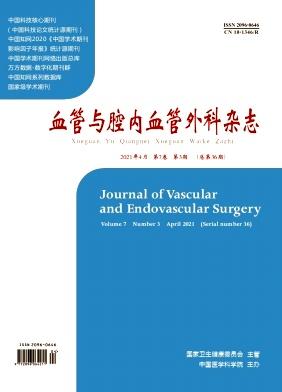When even luck matters: a compendium of all possible complications during hybrid repair of a dissecting TAAA occurred in a single patient
引用次数: 0
Abstract
Purpose. A 73-year-old woman, already submitted to repair of the ascending aorta and subsequently to aortic valve substitution in redo sternotomy, presented to our attention with a dissecting TAAA with a distal aortic arch diameter of 6 cm. Our goal was to offer this extremely fragile patient the least invasive surgical treatment as possible. Technique. We treated this patient in two stages. In the first stage we performed a carotid-carotid-subclavian bypass. In the second stage we performed a TEVAR in zone 1, extending from the brachiocephalic artery to the celiac trunk. Left subclavian artery was previously occluded with a plug. CSFD was not adopted by default. Conclusion. This patient reported some extremely rare and unexpected complications that brought us to report this case. Hybrid techniques represent an extremely appealing opportunity to treat fragile patients affected by complex aortic diseases with relatively little invasive strategies, however, serious complications can occur.即使运气也很重要:在一个患者身上发生了解剖性TAAA混合修复过程中所有可能的并发症的摘要
目的。一位73岁的女性,已经接受了升主动脉修复术,随后在重做胸骨切开术中进行了主动脉瓣置换术,我们注意到一例主动脉远端弓直径为6cm的分离性TAAA。我们的目标是尽可能为这个极度脆弱的病人提供微创手术治疗。技术。我们分两个阶段治疗这个病人。在第一阶段,我们进行了颈动脉-颈动脉-锁骨下搭桥。在第二阶段,我们在从头臂动脉到腹腔干的1区进行了TEVAR。左锁骨下动脉先前被堵塞。缺省情况下不采用CSFD。结论。该患者报告了一些极其罕见和意想不到的并发症,使我们报告了这个病例。混合技术代表了一个极具吸引力的机会,以相对较少的侵入性策略治疗受复杂主动脉疾病影响的脆弱患者,然而,严重的并发症可能发生。
本文章由计算机程序翻译,如有差异,请以英文原文为准。
求助全文
约1分钟内获得全文
求助全文

 求助内容:
求助内容: 应助结果提醒方式:
应助结果提醒方式:


